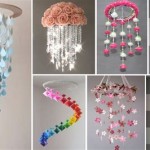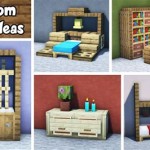How To Decorate Around a Wall-Mounted TV
Wall-mounted televisions have become a staple in modern homes, offering a sleek and space-saving alternative to traditional TV stands. However, a blank wall behind a television can often appear stark and uninspired. Decorating around a wall-mounted TV requires careful consideration and planning to create a visually appealing and functional focal point that integrates seamlessly with the surrounding décor. This article will explore various techniques and strategies for enhancing the space around a wall-mounted TV, transforming it from a simple viewing area into a stylish and engaging element of the room.
The primary objective when decorating around a wall-mounted TV is to create a balanced and harmonious composition. This involves considering factors such as the size of the television, the wall's dimensions, the existing room décor, and the desired aesthetic. Without proper planning, the television can appear disproportionate or out of place, detracting from the overall ambiance of the room.
Camouflaging the Cables and Outlets
One of the most significant challenges in decorating around a wall-mounted TV is managing the unsightly cables and electrical outlets. Exposed wires can disrupt the clean lines and minimalist aesthetic that wall-mounted televisions are intended to create. Several solutions exist to address this issue, ranging from simple concealments to more elaborate architectural modifications.
Cable management systems are readily available at most hardware and electronics stores. These systems typically consist of plastic channels or covers that can be mounted to the wall to conceal the cables running from the television to the power outlet and other devices. Some systems are paintable, allowing them to blend seamlessly with the wall color. The installation process usually involves attaching the channels to the wall using adhesive strips or screws, feeding the cables through the channels, and then snapping the covers into place.
Another option is to install an in-wall cable management system. This involves running the cables through the wall cavity, concealing them completely from view. This method requires cutting holes in the wall to route the cables, which may involve some basic carpentry skills or the assistance of a professional. In-wall cable management systems typically include wall plates with openings for the cables and mounting brackets to secure the cables within the wall.
For a more permanent solution, consider hiring an electrician to relocate the electrical outlet and cable connections to a position directly behind the television. This eliminates the need for any visible cables or cable management systems. However, this option is more expensive and requires professional installation to ensure safety and compliance with electrical codes.
Regardless of the method chosen, effective cable management is crucial for creating a clean and uncluttered look around the wall-mounted TV. Eliminating visible cables immediately enhances the visual appeal of the space and prevents the television from looking like an afterthought.
Adding Texture and Dimension with Wall Treatments
The wall behind a wall-mounted TV serves as a backdrop, and its treatment can significantly impact the overall aesthetic. A plain, unadorned wall can appear bland and uninviting. Introducing texture and dimension through various wall treatments can add visual interest and depth, transforming the viewing area into a more engaging and stylish space. Several options are available, each offering a unique aesthetic and level of complexity.
Accent walls are a popular choice for adding visual interest behind a wall-mounted TV. An accent wall can be created by painting the wall a different color from the surrounding walls, using wallpaper with a bold pattern, or applying a textured finish such as brick veneer or wood paneling. The key is to choose a wall treatment that complements the existing décor and enhances the overall ambiance of the room. For example, a dark-colored accent wall can create a dramatic contrast with a light-colored TV, while a wood-paneled wall can add warmth and texture to a contemporary space.
Another option is to use decorative wall panels. These panels are available in a wide range of materials, styles, and textures, including wood, metal, fabric, and acoustic foam. Decorative wall panels can be easily installed using adhesive or screws and can be arranged in various patterns to create a unique and eye-catching design. They also offer the added benefit of sound absorption, which can improve the acoustics of the room.
Shiplap is a popular choice for adding a rustic or coastal touch to a space. Shiplap consists of wooden planks with overlapping grooves that create a distinctive horizontal pattern. It can be painted or stained to match the existing décor and can be installed relatively easily using nails or screws. Shiplap is a versatile option that can be used to create a full accent wall or a smaller feature area behind the TV.
Regardless of the wall treatment chosen, it is important to consider the size and scale of the television and the wall. A large television may benefit from a bolder and more dramatic wall treatment, while a smaller television may be better suited to a more subtle and understated design. The goal is to create a balanced and harmonious composition that enhances the viewing experience and complements the overall décor of the room.
Creating a Gallery Wall or Displaying Art
A gallery wall or carefully curated selection of artwork can add personality and visual interest around a wall-mounted TV. The key is to arrange the artwork in a way that complements the television and creates a balanced and harmonious composition. This involves considering factors such as the size and style of the artwork, the spacing between the pieces, and the overall layout of the gallery wall.
When creating a gallery wall around a wall-mounted TV, it is important to choose artwork that complements the style of the television and the overall décor of the room. For example, if the television has a sleek and modern design, choose artwork with clean lines and minimalist aesthetics. If the room has a more traditional style, choose artwork with classic themes and ornate frames. The goal is to create a cohesive and visually appealing arrangement that enhances the viewing experience and adds personality to the space.
The size and scale of the artwork should also be considered. Larger pieces can be used to create a focal point, while smaller pieces can be used to fill in the gaps and create a more balanced composition. It is important to vary the sizes and shapes of the artwork to add visual interest and prevent the gallery wall from looking too monotonous.
The spacing between the pieces of artwork is also important. Too much space can make the gallery wall look sparse and disjointed, while too little space can make it look cluttered and overwhelming. A general rule of thumb is to leave between 2 and 4 inches of space between each piece of artwork. However, this may need to be adjusted depending on the size and style of the artwork.
Alternative to a gallery wall, strategically placed floating shelves offer another avenue for displaying art objects, plants, or decorative items around a wall-mounted TV. Shelves provide a practical storage solution while also contributing to the overall visual appeal of the space. The shelves should be chosen to complement the style of the television and the existing décor of the room. A minimalist shelf design tends to create a clean and sophisticated look to the room. The color of the shelves should also be taken into account to coordinate fully with the television and the decor.
The layout of the gallery wall or shelf arrangement should be carefully planned to create a balanced and harmonious composition. A common approach is to start with the largest piece of artwork and then arrange the smaller pieces around it. Another approach is to create a symmetrical arrangement with the television as the center point. Regardless of the approach chosen, it is important to experiment with different layouts until you find one that you are happy with.
It's important to keep in mind the positioning of the shelves so that they do not obstruct the view of the TV from its usual viewing angle in the room. It is also important to consider the weight limits of the shelves being installed.
Adding a gallery wall or thoughtfully curated collection of artwork is an effective way to personalize the space around a wall-mounted TV and create a visually engaging and stylish focal point.
These various strategies can be combined and adapted to create a unique and personalized design that reflects individual preferences and enhances the overall aesthetic of the room. Remember to consider the size of the television, the dimensions of the wall, and the existing décor when planning the layout and choosing decorative elements.

Make Decorating Around A Wall Mounted Tv Easy And Stylish

7 Best Ways To Decorate Around The Tv Maria Killam

How To Decorate Around A Tv Christina Maria Blog

How To Decorate Around Your Tv With Floating Shelves

40 Ideas For Decorating Around The Tv A House Full Of Sunshine

Tips For Decorating Around A Tv Beautiful Gallery Wall

Budget Friendly Tv Wall Decor Ideas

How To Decorate Around A Tv Christina Maria Blog

7 Best Ways To Decorate Around The Tv Maria Killam

How To Decorate Around Your Wall Mounted Tv Mount It
Related Posts







